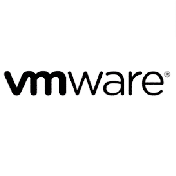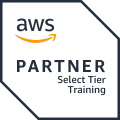Seminarinhalt
In diesem Training lernen Sie:
- Apply event-driven best practices to a serverless application design using appropriate AWS services
- Identify the challenges and trade-offs of transitioning to serverless development, and make recommendations that suit your development organization and environment
- Build serverless applications using patterns that connect AWS managed services together, and account for service characteristics, including service quotas, available integrations, invocation model, error handling, and event source payload
- Compare and contrast available options for writing infrastructure as code, including AWS CloudFormation, AWS Amplify, AWS Serverless Application Model (AWS SAM), and AWS Cloud Development Kit (AWS CDK)
- Apply best practices to writing Lambda functions inclusive of error handling, logging, environment re-use, using layers, statelessness, idempotency, and configuring concurrency and memory
- Apply best practices for building observability and monitoring into your serverless application
- Apply security best practices to serverless applications
- Identify key scaling considerations in a serverless application, and match each consideration to the methods, tools, or best practices to manage it
- Use AWS SAM, AWS CDK, and AWS developer tools to configure a CI/CD workflow, and automate deployment of a serverless application
- Create and actively maintain a list of serverless resources that will assist in your ongoing serverless development and engagement with the serverless community
Programm
Module 0: Introduction
- Introduction to the application you will build
- Access to course resources (Student Guide, Lab Guide, and Online Course Supplement)
- Best practices for building modern serverless applications
- Event-driven design
- AWS services that support event-driven serverless applications
- Characteristics of standard request/response API-based web applications
- How Amazon API Gateway fits into serverless applications
- Try-it-out exercise: Set up an HTTP API endpoint integrated with a Lambda function
- High-level comparison of API types (REST/HTTP, WebSocket, GraphQL)
- Authentication vs. Authorization
- Options for authenticating to APIs using API Gateway
- Amazon Cognito in serverless applications
- Amazon Cognito user pools vs. federated identities
- Overview of imperative vs. declarative programming for infrastructure as code
- Comparison of CloudFormation, AWS CDK, Amplify, and AWS SAM frameworks
- Features of AWS SAM and the AWS SAM CLI for local emulation and testing
- Development considerations when using asynchronous event sources
- Features and use cases of Amazon EventBridge
- Try-it-out exercise: Build a custom EventBridge bus and rule
- Comparison of use cases for Amazon Simple Notification Service (Amazon SNS) vs. EventBridge
- Try-it-out exercise: Configure an Amazon SNS topic with filtering
- Development considerations when using polling event sources to trigger Lambda functions
- Distinctions between queues and streams as event sources for Lambda
- Selecting appropriate configurations when using Amazon Simple Queue Service (Amazon SQS) or Amazon Kinesis Data Streams as an event source for Lambda
- Try-it-out exercise: Configure an Amazon SQS queue with a dead-letter queue as a Lambda event source Hands-On Labs
- Hands-On Lab 1: Deploying a Simple Serverless Application
- Hands-On Lab 2: Message Fan-Out with Amazon EventBridge
Module 7: Writing Good Lambda Functions
- How the Lambda lifecycle influences your function code
- Best practices for your Lambda functions
- Configuring a function
- Function code, versions and aliases
- Try-it-out exercise: Configure and test a Lambda function
- Lambda error handling
- Handling partial failures with queues and streams
- AWS Step Functions in serverless architectures
- Try-it-out exercise: Step Functions states
- The callback pattern
- Standard vs. Express Workflows
- Step Functions direct integrations
- Try-it-out exercise: Troubleshooting a Standard Step Functions workflow
- The three pillars of observability
- Amazon CloudWatch Logs and Logs Insights
- Writing effective log files
- Try-it-out exercise: Interpreting logs
- Using AWS X-Ray for observability
- Try-it-out exercise: Enable X-Ray and interpret X-Ray traces
- CloudWatch metrics and embedded metrics format
- Try-it-out exercise: Metrics and alarms
- Try-it-out exercise: ServiceLens Hands-On Labs
- Hands-On Lab 3: Workflow Orchestration Using AWS Step Functions
- Hands-On Lab 4: Observability and Monitoring
Module 10: Serverless Application Security
- Security best practices for serverless applications
- Applying security at all layers
- API Gateway and application security
- Lambda and application security
- Protecting data in your serverless data stores
- Auditing and traceability Module 11: Handling Scale in Serverless Applications
- Scaling considerations for serverless applications
- Using API Gateway to manage scale
- Lambda concurrency scaling
- How different event sources scale with Lambda Module 12: Automating the Deployment Pipeline
- The importance of CI/CD in serverless applications
- Tools in a serverless pipeline
- AWS SAM features for serverless deployments
- Best practices for automation
- Course wrap-up Hands-On Labs
- Hands-On Lab 5: Securing Serverless Applications
- Hands-On Lab 6: Serverless CI/CD on AWS
Zielgruppen
- Entwickler, die mit Serverless vertraut sind und Erfahrung mit der Entwicklung in der AWS-Cloud
Vorkenntnisse
- Teilnahme an dem Präsenztraining AWS Technical Essentials oder vergleichbare Kenntnisse
- Kenntnisse der wichtigsten AWS-Services
- Programmiererfahrung in einer der folgenden Sprachen:
Python
.NET
Java




